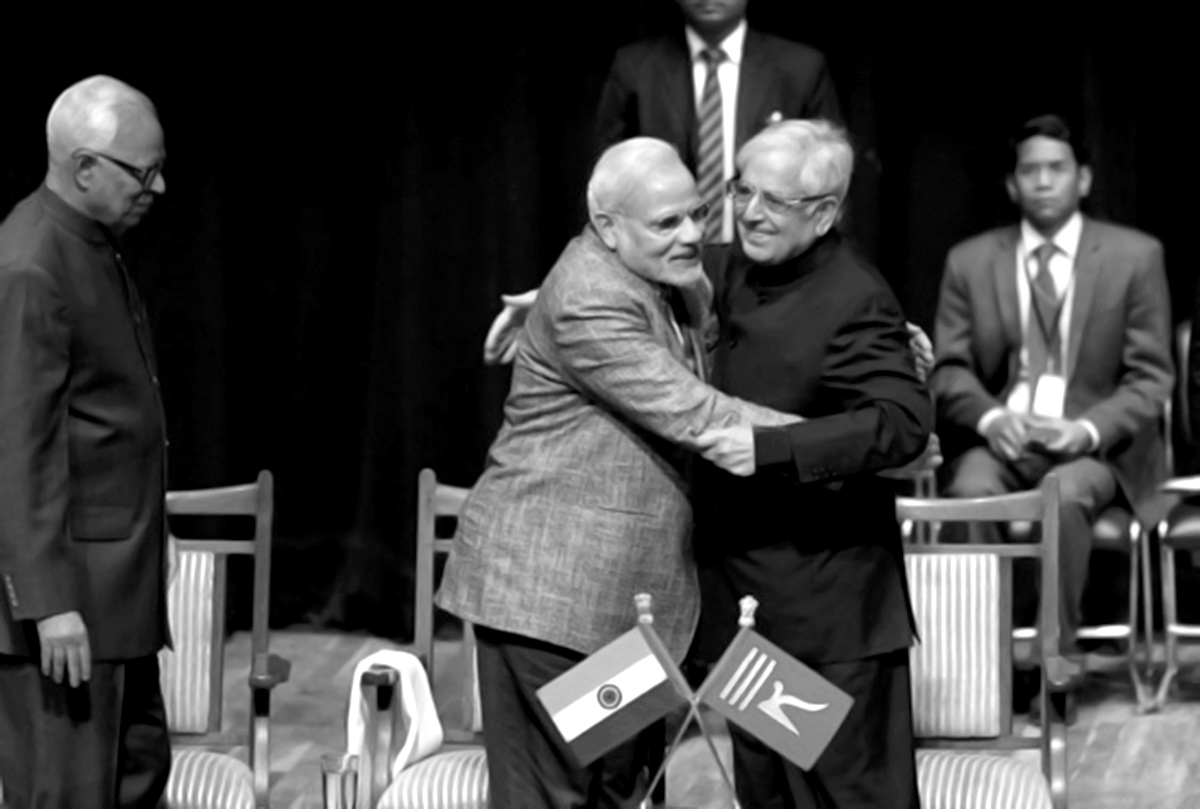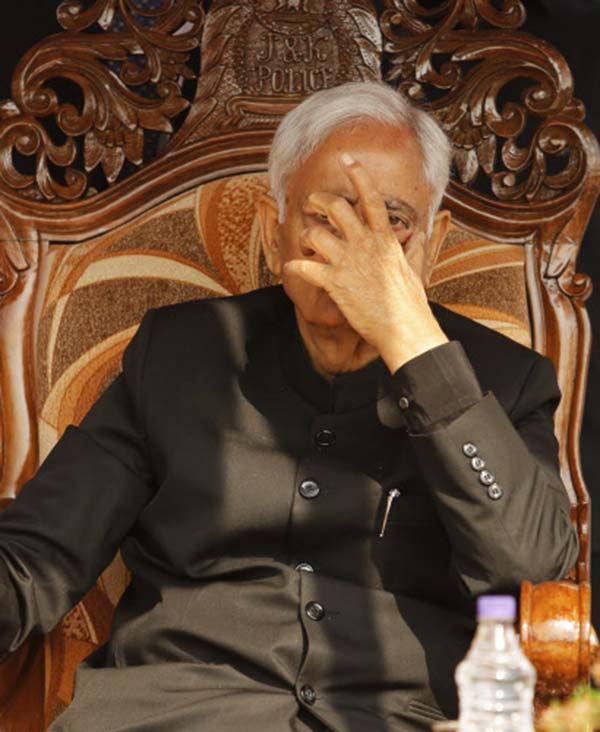by Masood Hussain
Mufti Sayeed is one of the few Kashmir politicians who left no autobiography behind. This leaves his half-a-century of public life to be judged by the historians, apparently on basis of circumstantial evidence.

I believe Mufti’s political carrier had three distinct eras. The only thing that was connecting the three phases was his avowed conviction in J&K’s accession to India was the right decision at the right time.
Unlike most of his political peers, Mufti was baptized directly into power politics when National Conference, then a Congress satellite, pitch-forked him to the state assembly. Till 1975 when Congress was asked to pave way for Sheikh Abdullah’s return to power, Mufti was driven by sheer personal ambition.
The second stage of his political career was too long – from 1975 to 1996 during which he changed many parties and held top positions. Initially, he tried to create his space in Kashmir and use everything that was in his command but failed. Eventually, Delhi shifted him out. This era can simply be termed as his era of being a ‘Delhi’s man in Kashmir’.
Post-militancy, he returned home and started reconnecting with people. His rich experience at the national level helped him understand the mess on the ground. He reviewed his politics within his ideological framework and started affecting changes. He helped Kashmir create a credible opposition for the first time and eventually became ‘Kashmir’s man in Delhi’.
Mufti’s philosophy on Kashmir was very simple – do not leave opposition space empty. Over the years, he believed, Delhi would encourage all the unionist forces to stay together and rule. This would eventually keep the opposition space ready to be filled by separatists thus de-stabilizing the state.
Even the rise of PDP details how he used elements intelligently, mostly drawn from the separatist block to build his party, brick-by-brick. His flag, election symbol, sloganeering, issues of importance and talking points in public meetings, as one analyst once wrote, suggested that while separatists had set up the small Azaadi shops, Mufti created a literal mall on it. With Mehbooba as the main party face, his policies attracted even the sections within the separatist fold, militants not excluded, towards what he preached.
Gradually he started looking towards the ‘borders’, ensured a halt in gun-battles and eventually encouraged the opening of the LoC for trade and travel.
Despite having an unreasonable governor and a corrupt bunch of Congressmen as his allies, Mufti created a new standard for governance in the three-year stint in 2002. Three factors played a key role – his stature and integrity, his unmatched connection with ground zero and his unambiguous pro-people stand. Largely, Mufti’s doctrine’s latter two points were essentially the contribution of his daughter, Mehbooba who contributed immensely in making her father relevant to a changed Kashmir.
After thrashing his deal with Congress, no questions were ever raised by any Congressmen over how he was tackling Kashmir. This was because he was from the old Congress guard to the extent that even Manmohan Singh was his junior. He would rarely go to the airport to receive dignitaries.
It was this stature that once created an embarrassing situation when in 2005 Dr Singh and Mrs Gandhi flew to oversee the relief measures after a south Kashmir village was buried under snow. As the local corps commander started his presentation revealing what the army was doing, Mufti interrupted asking him to stop. “You are here for the aid of civil administration as J&K is run by an elected government,” Mufti stunned the audience and then briefed the dignitaries.
But in his career as Chief Minister, he had to face various embarrassing situations. He once flew to Bangus Valley but was not permitted by the armed forces to land. That, however, helped him to rebuild his rapport with the army and for most of the time; his suggestions were taken very seriously. He put an end to nocturnal raids, gradually disbanded the use of Ikhwanis and introduced the new velvet-glove counter-insurgency.
Mufti would see opposition as a political rival, rather than an enemy which was new in J&K where political vengeance was an extension of regime change. His sense of accommodating political rivals gave new sophistication to unionist politics. He would ensure officers would not be victimized for their closeness with the opposition.
His stint saw the bar of governance being raised to a new level that people compared Omar’s full-term with it. Eventually, Mufti was personally seen trying to meet his own standards after he stitched an alliance with BJP. This time, however, there were a set of factors that prevented him from coming closer.
Firstly, it was a new regime in Delhi that had survived on the margins of organized politics and came to power preaching apparently un-implementable political belief structure. Mufti’s party used the rise of the Hindu right to garner support back home but eventually was caught in the big picture and stitched an alliance with it.
Secondly, Mufti was on the wrong side of age. Gradually he had lost most of his peers in politics and personal circle leaving him to work with a younger lot within his party. Even during cabinet meetings, he rarely felt impressed by his ministers and would interrupt them frequently thinking their lack of experience might be one factor for delayed delivery on the ground.
And finally, his contacts in Delhi dispensation were limited to one top security expert. Putting his policy across took more time in 2015 than in 2002-05. Every time, he would weigh the costs of his decision-making in terms of the reaction that TV would trigger in BJP-RSS. From the increased criticism to his thankfulness to militants, Hurriyat and Pakistan for smooth 2014 polls on his first day in office to the massive campaign against him for setting Masarat Aalam free, eventually reduced his ‘battle of ideas’ to a mere gimmick.

At the fag end of 2015, however, the situation had started improving. A series of meetings with Modi started breaking the ice on three fronts – talks with Pakistan, having certain symbolic demilitarization of space and a bailout package. But then, his bad health overtook him and made him land in Delhi wherefrom he flew home, dead.
Mufti has held very powerful positions. A twice J&K Chief Minister, Tourism Minister, Civil Aviation Minister, Home Minister and a highly resourceful PCC Chief. Given the clouts associated with all these positions, I believe he died a poor man.
















